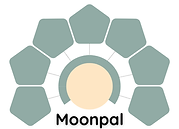Are You Ready to Embark on the Adventure of Navigating the SaaS Product Lifecycle?
- Guillaume Vives

- Mar 19
- 4 min read
Navigating the SaaS product lifecycle can often feel like traversing uncharted waters. The mix of technology, strategy, and customer feedback can present unique challenges. But fear not; whether you are embarking on a new project or seeking to improve your existing SaaS offerings, we will guide you through this exciting journey from start to finish.

Understanding the SaaS Product Lifecycle
To embark on your adventure, grasping the SaaS product lifecycle is essential. This lifecycle comprises four key stages: conception, validation, launch, and growth. Each stage is distinct yet interconnected, akin to a map guiding you through unknown terrain where adaptation is vital.
Important Stages
Conception: Here, you identify a problem that your SaaS product will solve. Gather a varied team to brainstorm ideas.
Validation: This stage tests your concept with real users by creating a Minimum Viable Product (MVP).
Launch: The moment your product goes live, bringing excitement and challenges.
Growth: Analyze user feedback and data to refine your product continually.
Gaining a better understanding of these stages establishes a solid foundation for the deeper exploration ahead.
The Joy of Conception and Ideation
Imagine yourself on a quest, scanning the horizon for opportunities. The conception stage is where creative brainstorming occurs. Aim to assemble a diverse team to generate innovative concepts. Your mission is to pinpoint a specific problem your SaaS product aims to tackle.
Utilize frameworks like the Lean Canvas or Value Proposition Canvas to map out elements such as customer segments and value propositions. This ensures you are targeting the right audience effectively. For example, identifying that 60% of small businesses struggle with invoicing can lead you to create a solution that addresses this need directly.
Once you have a solid idea, dive into market research. Analyze competitors' strengths and weaknesses. Gathering insights during this stage can be likened to charting uncharted territories and is essential for defining your strategic edge.
Navigating Through Validation
As you progress, the validation stage presents an exciting challenge. Here, the focus turns to real-world application. Develop an MVP to test your assumptions without committing significant resources.
Engaging potential users via surveys and interviews can provide invaluable insights. For instance, obtaining feedback through tools like Typeform can reveal that 75% of users prefer feature X over feature Y. Welcome feedback with open arms and be ready to pivot when necessary.
A quick tip: Consider using user testing platforms such as UserTesting.com. These platforms act as reliable guides, helping you gather real-time feedback to ensure your product meets user needs before moving toward a full-fledged launch.
Setting Sail: Launching Your Product
The launch phase is charged with energy, much like embarking on a grand ocean voyage. While excitement is in the air, it is essential to maintain focus on your marketing strategy to effectively communicate your value proposition.
Identify your launch channels. Options include:
Content Marketing: Generate engaging blog posts to highlight your product’s value.
Email Campaigns: Keep potential users informed and excited leading up to the launch.
Building anticipation is critical. Consider pre-launch campaigns to garner interest. Think of your audience as eager crew members ready to join your journey.
However, do not forget that the launch marks the beginning of an ongoing dialogue with users. Ensure your support systems are effective to address inquiries and gather feedback as your audience interacts with the product.
Steering Into Growth and Maturity
As your product gains momentum, the growth phase emerges—a thrilling period brimming with possibility. However, this growth also requires regular assessment. How can you enhance user retention? What new features would improve the user experience?
Continuous improvement should be your guiding principle during this stage. Utilize data analytics to monitor user behavior. For example, tracking metrics can reveal that 80% of users engage most with feature A, suggesting it could be enhanced further. Analytics act as the compass directing your strategic decisions.
Additionally, consider forming strategic partnerships or integrations that can expand your product’s ecosystem. This collaboration can differentiate you from competitors and reinforce your position in the market.
Facing Challenges and Iteration
Even successful explorers encounter storms along the way. Challenges during the SaaS product lifecycle are inevitable, whether they arise from competitor innovations, shifts in consumer behavior, or technological advancements.
Adopt a flexible mindset and embrace iteration. Sometimes, you'll need to return to the validation stage to redefine user needs or experiment with new features based on analytics. Understand that this process is a cycle of continuous improvement.
Keep in mind the importance of regularly evaluating your product against competitors and changing market demands. Stay connected with your customers and remain aware of technological advancements that can enhance your SaaS offering.
Your Adventure Awaits
As you prepare to navigate the SaaS product lifecycle, remember that this journey is just as important as the destination. Every phase presents invaluable lessons, partnerships, and opportunities for growth. Embrace the uncertainties and excitement that come with each stage, from brainstorming innovative ideas to strategizing for ongoing growth.
So, are you ready to embark on this adventure? With a well-defined roadmap, the right tools in hand, and a mindset open to adaptation, you are ready to tackle the complexities of the SaaS landscape. Let the exploration begin!
.png)



Comments